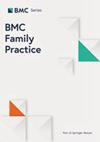基层医疗机构中中国高血压患者耐药性高血压的患病率和相关风险因素
IF 3.2
3区 医学
Q1 MEDICINE, GENERAL & INTERNAL
引用次数: 0
摘要
高血压是全球主要的公共卫生问题,也是最常见的慢性疾病,在香港 15 岁或以上人群中的发病率为 27%。越来越多的文献证实,耐药性高血压(RHT)患者出现不良临床结果的风险增加,有记录的靶器官损伤率也更高。本研究旨在确定在香港公立基层医疗机构接受治疗的华人高血压患者中抵抗性高血压的患病率,并探讨其相关风险因素。这是一项横断面描述性研究。研究对象包括于2019年7月1日至2020年6月30日期间在香港医院管理局辖下10间公立基层医疗诊所接受定期随访的30岁或以上华裔高血压患者。研究人员从该诊所的电脑记录系统中检索了患者的人口统计学数据、临床参数和用药情况。通过多变量逻辑回归分析,确定了高血压肾病的发病率,并探讨了高血压肾病的相关风险因素。在抽取的 538 名中国高血压患者中,平均年龄为(67.4±11.5)岁,51.9%为女性。平均高血压病程为(10.1 ± 6.4)年,平均收缩压和舒张压分别为(128.8 ± 12.3)毫米汞柱和(72.9 ± 10.8)毫米汞柱。538 名患者中有 40 人患有 RHT,总患病率为 7.43%。研究发现,有四个因素与 RHT 风险增加有关,按几率升序排列:高血压持续时间(OR 1.08)、男性(OR 2.72)、合并 2 型糖尿病(T2DM,OR 2.99)和充血性心力衰竭(CHF,OR 5.39)。在香港的基层医疗机构中,华裔高血压患者的 RHT 患病率为 7.43%。男性患者、高血压持续时间较长的患者、同时患有 T2DM 和慢性心力衰竭的患者更容易发生 RHT。临床医生在管理这类患者时应保持警惕,提供积极治疗和密切监测。本文章由计算机程序翻译,如有差异,请以英文原文为准。
Prevalence and associated risk factors of resistant hypertension among Chinese hypertensive patients in primary care setting
Hypertension (HT) is a major public health problem globally, and it is the commonest chronic disease with a prevalence of 27% among people aged 15 years or above in Hong Kong. There is emerging literature confirmed that patients with resistant hypertension (RHT) give its increased risk for adverse clinical outcomes and higher rate of documented target organ damage. This study aims to identify the prevalence of RHT among Chinese hypertensive patients managed in public primary care setting of Hong Kong and exploring its associated risk factors. This is a cross-sectional descriptive study. Chinese hypertensive patients aged 30 or above with regular follow-up between 1st July 2019 and 30th June 2020 in 10 public primary care clinics under the Hospital Authority of Hong Kong were included. Demographic data, clinical parameters and drug profile of patients were retrieved from its computerized record system. The prevalence of RHT was identified and the associated risk factors of RHT were explored by multivariate logistic regression analysis. Among the 538 sampled Chinese hypertensive patients, the mean age was 67.4 ± 11.5 years old, and 51.9% were female. The mean duration of hypertension was 10.1 ± 6.4 years, with a mean systolic and diastolic blood pressure of 128.8 ± 12.3 and 72.9 ± 10.8 mmHg respectively. 40 out of 538 patients were found to have RHT, giving an overall prevalence of 7.43%. Four factors were found to be associated with increased risk of RHT, in ascending order of odds ratio: duration of hypertension (OR 1.08), male gender (OR 2.72), comorbid with type 2 diabetes mellitus (T2DM, OR 2.99), and congestive heart failure (CHF, OR 5.39). The prevalence of RHT among Chinese hypertensive patients in primary care setting of Hong Kong is 7.43%. RHT is more common in male patients, patients with longer duration of hypertension, concomitant T2DM and CHF. Clinicians should be vigilant when managing these groups of patients and provide aggressive treatment and close monitoring.
求助全文
通过发布文献求助,成功后即可免费获取论文全文。
去求助
来源期刊

BMC Family Practice
医学-医学:内科
CiteScore
3.20
自引率
0.00%
发文量
0
审稿时长
4-8 weeks
期刊介绍:
BMC Family Practice is an open access, peer-reviewed journal that considers articles on all aspects of primary health care research. The journal has a special focus on clinical decision making and management, continuing professional education, service utilization, needs and demand, and the organization and delivery of primary care and care in the community.
 求助内容:
求助内容: 应助结果提醒方式:
应助结果提醒方式:


